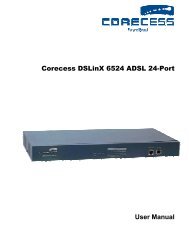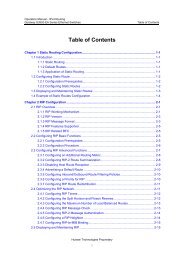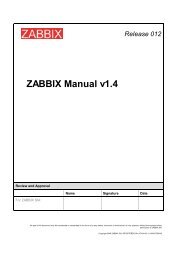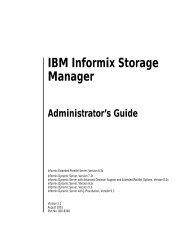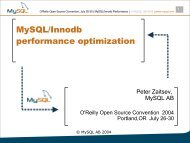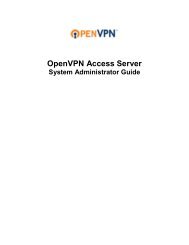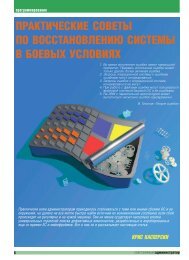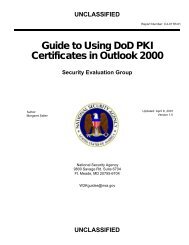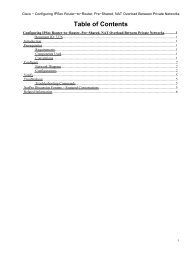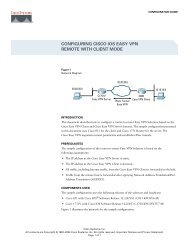Solaris Application Programming, 1/e - Chapter 4 - Parent Directory
Solaris Application Programming, 1/e - Chapter 4 - Parent Directory
Solaris Application Programming, 1/e - Chapter 4 - Parent Directory
Create successful ePaper yourself
Turn your PDF publications into a flip-book with our unique Google optimized e-Paper software.
60 <strong>Chapter</strong> 4 Informational Tools<br />
VCX and ICX: The number of context switches, voluntary (VCX) and involuntary<br />
(ICX). A voluntary context switch is one in which the process either completes<br />
its task and yields the CPU, or enters a wait state (such as waiting for<br />
data from disk). An involuntary context switch is one in which another<br />
higher-priority task is assigned to the CPU, or the process uses up its allocation<br />
of time on the CPU.<br />
SCL: The number of system calls.<br />
SIG: The number of signals received.<br />
PROCESS/NLWP: The name of the process (PROCESS) and the number of<br />
LWPs (NLWP).<br />
It is possible to use the flag -s to sort by a particular column. In<br />
Example 4.15, this is used to sort the processes by RSS.<br />
4.3.5 Listing Processes (ps)<br />
Example 4.15 Output from prstat Sorted by RSS<br />
$ prstat -s rss<br />
PID USERNAME SIZE RSS STATE PRI NICE TIME CPU PROCESS/NLWP<br />
8453 root 403M 222M sleep 49 0 13:17:50 0.0% Xsun/1<br />
28059 robin 218M 133M sleep 49 0 0:06:04 0.1% soffice2.bin/5<br />
28182 robin 193M 88M sleep 49 0 0:00:54 0.0% soffice1.bin/7<br />
26704 robin 87M 72M sleep 49 0 0:06:35 0.0% firefox-bin/4<br />
...<br />
ps displays a list of all the processes in the system. It is a very flexible tool and has<br />
many options. The output in Example 4.16 shows one example of what ps can<br />
report.<br />
Example 4.16 Sample Output from ps<br />
$ ps -ef<br />
UID PID PPID C STIME TTY TIME CMD<br />
root 0 0 0 Jul 06 ? 0:00 sched<br />
root 1 0 0 Jul 06 ? 0:01 /etc/init -<br />
root 2 0 0 Jul 06 ? 0:13 pageout<br />
...<br />
The options passed to the ps command in Example 4.16 are -e, to list all the<br />
processes; and -f, to give a “full” listing, which is a particular set of columns (in<br />
particular, it gives more information about how the application was invoked than<br />
the alternative -l “long” listing).



